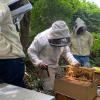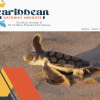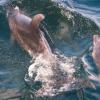Towards A New Shift In Conservation And Management Of A Fishery System And Protected Areas Using Bonefish (Albula Vulpes) As An Umbrella Species In Belize And Mexico
Although bonefish, Albula vulpes, supports a culturally and socio-economically important recreational fishery in the Caribbean Sea, little is known about their population characteristics. Understanding their population parameters are important for the creation of a sustainable fishery strategy in the Caribbean region. We used multistate modeling to estimate apparent survival, recapture probability, and movement of bonefish in the regions of Corozal-Chetumal Bay (CB) and the adjacent Caribbean coast (CC) of Belize and Mexico. We marked 9657 bonefish and recaptured 613 (6.5% recapture rate). A total of 64 multistate models were run in program MARK. The model with the lowest Akaike Information Criterion was the most parsimonious model that supported our data: constant apparent survival in CC but variable in CB; time-dependent recapture probability in CC and CB; and time-dependent movement between regions. The latter reflects a seasonal migration from the bay to spawn in the Caribbean during the north-winds season. The seasonal differences in apparent survival (CC = 63.6% and CB = 80.6%) and recapture probability (CC = 1.3% and CB =11.1%) are associated to spawning mortality, a post-spawning relocation, ontogenetic shift, predation, angling activities, site fidelity or a combination of these. These findings reinforces the association of environmental variables influenced by weather patterns with movement patterns, the entire region to be considered a single geographic catchment area necessary to sustain a local bonefish population and the need for a paradigm shift from a traditional to a new system of fisheries conservation and management using bonefish as an umbrella species.
Area of Interest: Belize
Year: 2020




